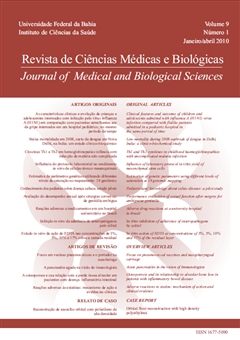Estimation of genetic parameters using different saturation levels in genomic mapping
DOI:
https://doi.org/10.9771/cmbio.v9i1.4636Keywords:
Genetic mappings – Density of markers – Cluster analysis – Marker-assisted selection – QTLAbstract
Genetic mappings were simulated using different saturation levels by markers to estimate the following parameters: phenotypicvalue, endogamy, favorable fixed allele and frequency of allele of the trait, in the marker-assisted selection (MAS). Clusteranalysis was realized, using the phenotypic values in order to obtain densities that could optimize the phenotypic increments.The genetic simulation system - Genesys was used to simulate the genome, consisting of a heritability quantitative characteristic(0.10), and the base and initial populations. The initial population was submitted to MAS for twenty consecutive generations.It was conducted at different saturation levels, represented by the distance in centiMorgan (cM) among adjacent markers. 15MAS were realized, each one corresponding to densities: 2, 4, 6, 8, 10, 12, 14, 16, 18, 20, 22, 24, 26, 28 and 30 cM. Mapping usingmedium to high density of markers indicated efficiency of phenotypic progress along generations under selection. This highsaturation was also a benefit to the setting of favorable alleles, increasing the frequency of alleles related to the trait, althoughthe most prominent increase in inbreeding. Cluster analysis indicated optimization and correlation in phenotypic values, whenassuming the densities of 4 and 6 cM, and significant gains for the saturation of 2, 8, 10, 12 and 14 cM.Downloads
Downloads
Published
2010-10-27
How to Cite
Jangarelli, M., & Euclydes, R. F. (2010). Estimation of genetic parameters using different saturation levels in genomic mapping. Journal of Medical and Biological Sciences, 9(1), 22–28. https://doi.org/10.9771/cmbio.v9i1.4636
Issue
Section
ORIGINAL ARTICLES
License
The Journal of Medical and Biological Sciences reserves all copyrights of published works, including translations, allowing, however, their subsequent reproduction as transcription, with proper citation of source, through the Creative Commons license. The periodical has free and free access.


